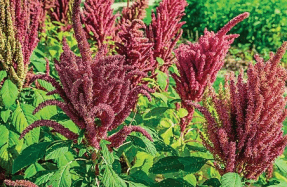
GET GROWING CREATURE FEATURE
Ladybirds are well known to gardeners as the number one organic means of aphid control. Our most common ladybird, the seven-spot, can eat around 5000 aphids in its short life. But our relationship with ladybirds begins long before we have any conception of biological control or beneficial predators.
Ladybirds are among some of the first creatures we encounter as children; whether on the cover of our first Ladybird book or out in the garden, ladybirds are instantly recognisable. Or are they? Ladybirds are, in fact, highly variable; beyond the usual red and black lies a spectrum of colours and patterns; some are yellow and black, some are cream and brown, some have 24 spots, some have none, some are fairly hairy and some are really very hairy. What's more, the famous fact you were told about them as a child – that you can tell how old a ladybird is by






